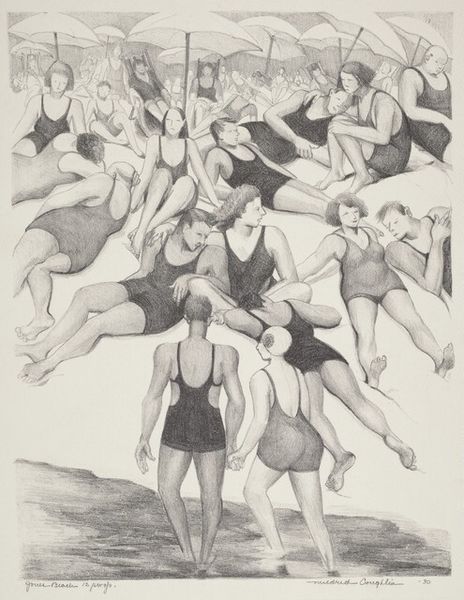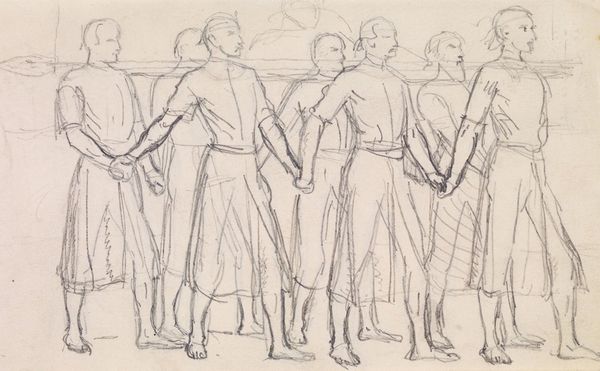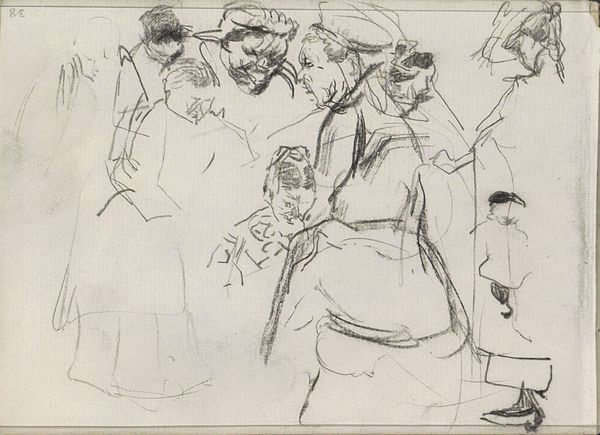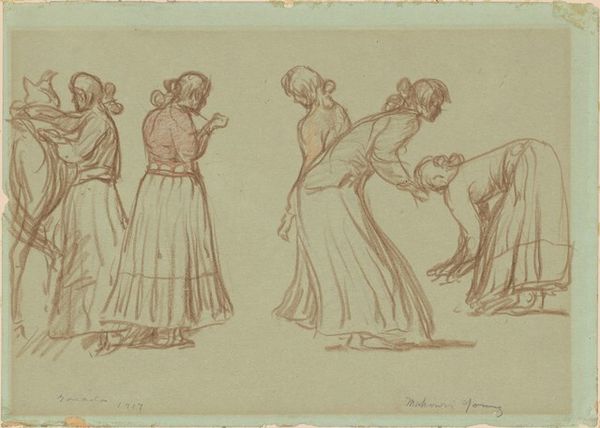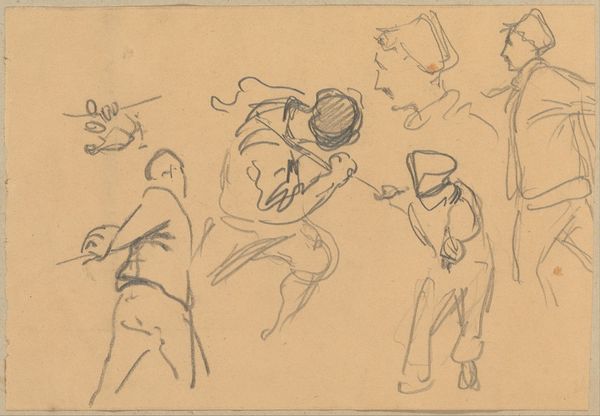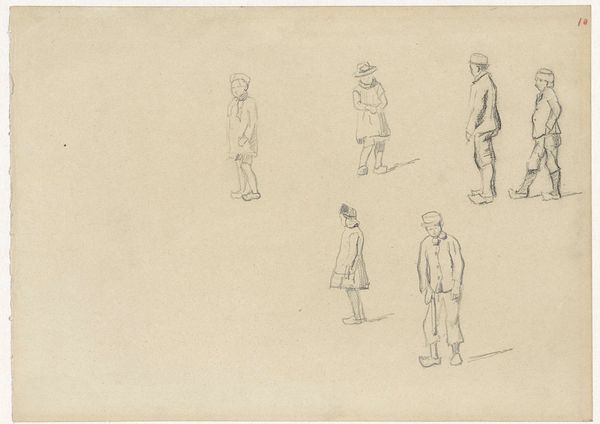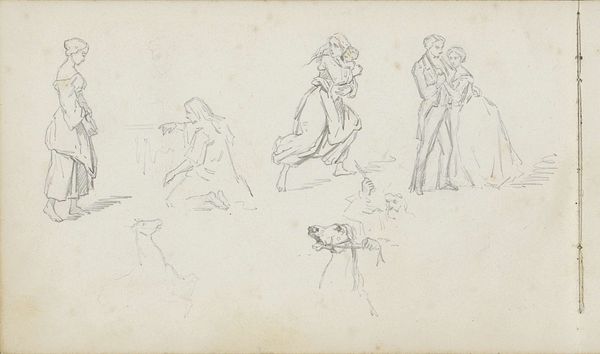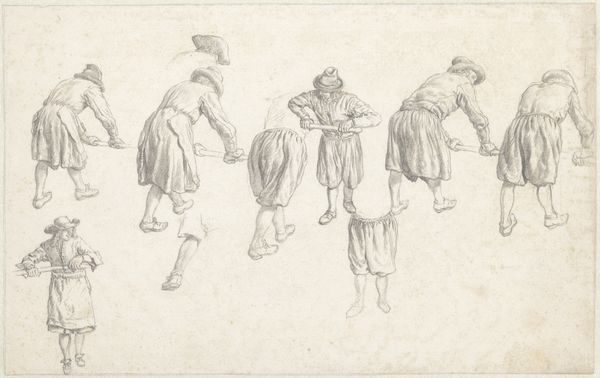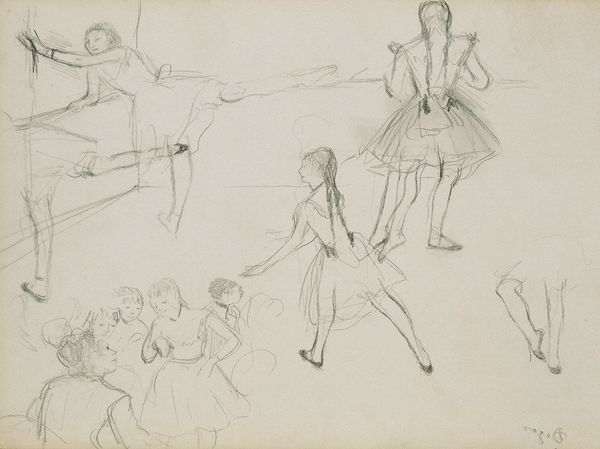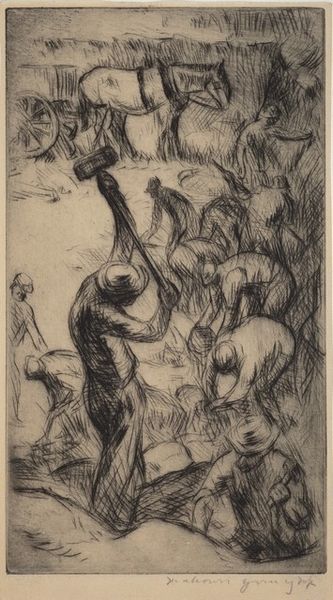
drawing, pencil
#
drawing
#
figuration
#
group-portraits
#
pencil
#
genre-painting
#
regionalism
Dimensions: image: 29.21 × 40.01 cm (11 1/2 × 15 3/4 in.) sheet: 30.48 × 45.56 cm (12 × 17 15/16 in.)
Copyright: National Gallery of Art: CC0 1.0
Editor: This drawing, titled *Skating* by Allan Rohan Crite, made in 1933, depicts a group of figures on what appears to be a frozen pond. The medium is pencil on paper, and I find myself intrigued by its focus on everyday life and community, yet something seems formally unresolved about it. What stands out to you when you look at this piece? Curator: It's a powerful image, especially when you consider Crite's dedication to depicting African American life in Boston during the early to mid-20th century. Remember that in 1933, while the Harlem Renaissance was waning, there was a growing need to capture and celebrate Black culture in different regions across America. Crite’s choice of a winter scene involving leisure – skating – disrupts stereotypes and highlights normalcy. Do you notice how he positions the figures? Editor: Yes, there's a distinct arrangement – a mix of figures skating and standing, a blurring effect that implies movement but the image still looks stiff and strangely formal. The Regionalist label makes more sense to me now as I start to consider the place where he lived. Curator: Exactly. The figures are interconnected, holding onto each other. Think about what that might signify socially and politically. During the Depression era, communal support and resilience were crucial, wouldn’t you agree? Furthermore, Crite actively pushed back against minstrel caricatures through the very act of painting Black individuals engaging in ordinary, dignified activities. Editor: So, by simply portraying Black people skating, Crite was making a social statement, challenging existing prejudices of the period. That's far more nuanced than my first impression allowed. I initially just saw a somewhat awkward composition. Curator: Precisely. And recognizing that shifts our understanding of the drawing. It moves from a mere depiction of skating to a powerful statement about identity and community in a specific time and place. The public role of art truly shines here, doesn’t it? Editor: It certainly does! Considering the historical context has given me a much richer appreciation for what Crite was trying to accomplish. It is amazing to learn more deeply the way social context impacted the way that artist created!
Comments
No comments
Be the first to comment and join the conversation on the ultimate creative platform.
